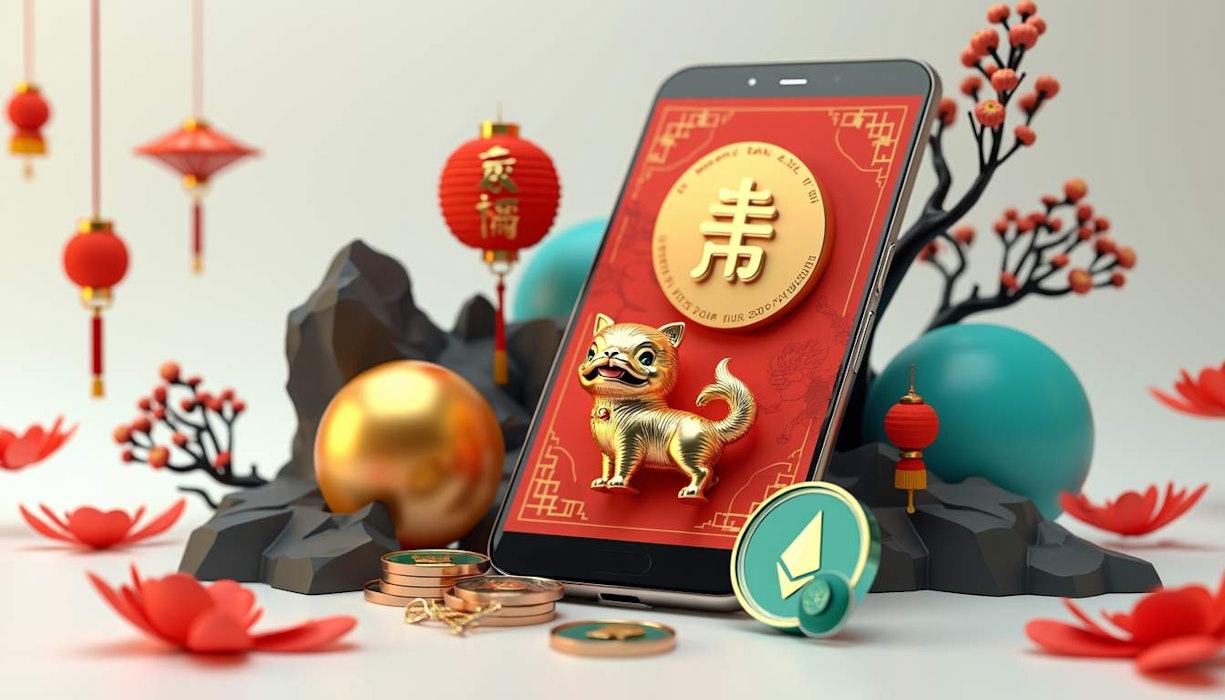Lunar New Year is known for many things, but a surge in crypto trading? That’s something that’s been observed, especially in Asia. This time of year has a knack for waking up trading volumes and incorporating elements from culture into the crypto space, like digital red packets and zodiac-themed memecoins. Let's dive into how these traditions impact crypto trading across the globe.
Lunar New Year and Global Trading
Asian Hours Take Center Stage
When the Lunar New Year rolls around, trading activity tends to shift significantly toward the Asian hours. Historically, this festive period has seen a spike in Eastern trading volume, often accounting for nearly half or more of global activity. Just last week, we were reminded of this with Bitcoin’s trading volume being heavily skewed toward Western trading hours, making up 56.15% of the activity. Fast forward to this week, and Eastern trading volume jumped to 46.45%, narrowing the gap.
Ripple Effect on Global Markets
This increased activity in Asia does not exist in a vacuum. The enhanced trading volume tends to spill over to other markets, raising overall liquidity and activity in cryptocurrencies. This is not surprising considering the cultural and financial practices associated with the Lunar New Year. The new year traditionally involves gifting money and rebalancing portfolios, which can increase demand and drive prices upwards globally.
Typically, there’s a lull in January as traders in Asia take time off to celebrate, followed by a rally. This can also affect trading volumes in non-Asian markets as global crypto liquidity is interwoven.
Sentiment and Psychological Factors
The Lunar New Year is a time when prosperity and new beginnings are highlighted, instilling a sense of optimism that can lead to speculative investments outside of Asia. This positive sentiment can influence trading decisions in non-Asian markets, contributing to overall momentum.
Bigger Picture: Institutional and Macro Influences
The immediate effects of the Lunar New Year may be more apparent in Asia, but institutional investors and macroeconomic factors in other regions are not immune. Regulatory updates, economic announcements, and institutional interest in cryptocurrencies can interact with Lunar New Year sentiments, leading to broader market movements.
Digital Red Packets: A Modern Twist on Tradition
Old Tradition Meets New Tech
The tradition of gifting money during the Lunar New Year is well established in East Asia. In China, for example, red envelopes filled with cash symbolize good fortune. Now, with the rise of technology, this age-old practice has been modernized.
Digital red packets, made possible by WeChat and Alipay, have transformed the way people give and receive these envelopes. This modern adaptation preserves the essence and tradition but offers convenience.
The New Normal
Younger generations have adapted seamlessly to exchanging digital red envelopes. WeChat has been instrumental since 2014, adding features like customizable covers, enhancing the festive experience.
Cultural Importance
Whether given physically or digitally, the act of gifting red envelopes is culturally significant. It represents good fortune and blessings for the new year, and the digital version still captures this essence.
Coexisting Traditions
Digital red packets haven’t entirely replaced traditional envelopes. They coexist in our culture. In formal or personal settings, many still prefer giving physical envelopes, while digital ones are often more casual.
Social Nuances
However, there are some nuances. For instance, China’s Communist Party has warned cadres against digital packets due to concerns about bribery, so they’re not a one-size-fits-all solution.
Zodiac Memecoins: A Risky Venture
The Zodiac Craze
The Lunar New Year usually sees a surge in speculative mania related to the zodiac animal of the year. This Year of the Snake is no exception. Several snake-themed tokens have come to market, and some, sadly, are aimed at victims.
The Year of the Snake saw a Solana-based token briefly soar to a $1.7 million market cap before plummeting. Another Ethereum-based token called "Chinese New Year" peaked at a wild 119,194% rise.
High Failure Rates
Binance Research warns us that the memecoin market is rife with risk. A staggering 97% of these tokens either fail or become inactive shortly after launch. Additionally, manipulation, particularly pump-and-dump schemes, is widespread.
Speculative Nature
Memecoins are often driven by social media trends rather than anything with intrinsic value. This makes them highly speculative, with prices subject to wild fluctuations.
Liquidation Risks
High leverage in the crypto market amplifies price volatility and increases liquidation risks. Rapid price rises followed by significant liquidations can be particularly risky.
Emotional Investing
Many chase memecoins based on emotional or speculative factors, leading to impulsive decisions and amplifying losses. The community-driven nature of these tokens can distract investors from their inherent risks.
Seasonal Unpredictability
While Lunar New Year may give some cryptos a boost, the impact on memecoins can be unpredictable. The optimism and trading activity can also amplify the risks.
The Bottom Line
Lunar New Year is a time of increased activity and opportunities in crypto trading. The blend of cultural practices, like digital red packets, and the rise in trading volumes during Asian hours can be intriguing. However, tread carefully, especially with speculative assets like memecoins. Understanding the larger economic and cultural context can help navigate the opportunities and risks presented during this vibrant period in the cryptocurrency market.
